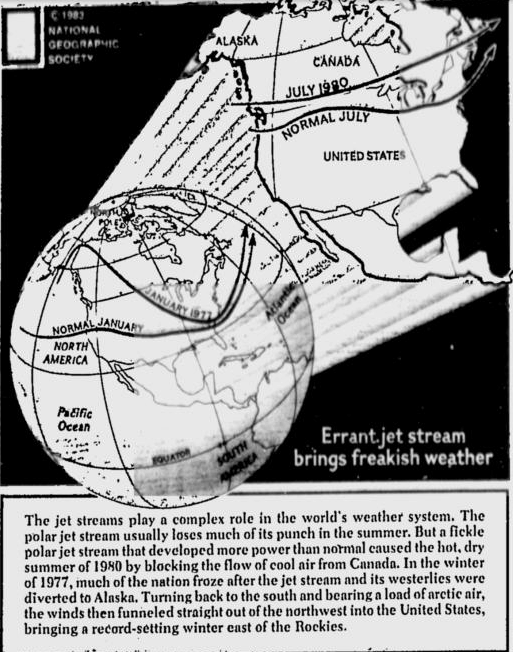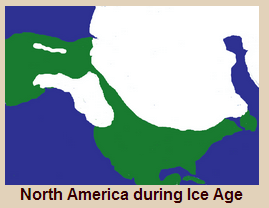As we saw this winter, the same weather patterns which bring cold to the central and eastern US, also bring warmth to Alaska. That is what happened during the last ice age.
Disrupting the Borg is expensive and time consuming!
Google Search
-
Recent Posts
- “Why Do You Resist?”
- Climate Attribution Model
- Fact Checking NASA
- Fact Checking Grok
- Fact Checking The New York Times
- New Visitech Features
- Ice-Free Arctic By 2014
- Debt-Free US Treasury Forecast
- Analyzing Big City Crime (Part 2)
- Analyzing Big City Crime
- UK Migration Caused By Global Warming
- Climate Attribution In Greece
- “Brown: ’50 days to save world'”
- The Catastrophic Influence of Bovine Methane Emissions on Extraterrestrial Climate Patterns
- Posting On X
- Seventeen Years Of Fun
- The Importance Of Good Tools
- Temperature Shifts At Blue Hill, MA
- CO2²
- Time Of Observation Bias
- Climate Scamming For Profit
- Climate Scamming For Profit
- Back To The Future
- “records going back to 1961”
- Analyzing Rainfall At Asheville
Recent Comments
- Robertvd on “Why Do You Resist?”
- arn on Climate Attribution Model
- Gordon Vigurs on Climate Attribution Model
- arn on Climate Attribution Model
- Bob G on Climate Attribution Model
- arn on Climate Attribution Model
- arn on “Why Do You Resist?”
- conrad ziefle on Climate Attribution Model
- arn on Climate Attribution Model
- arn on Climate Attribution Model




Reblogged this on wwlee4411 and commented:
Truth!
No surprise here, as cold air masses formed over the ice cap would pour down over North America and warmer air would have to replace it. As the cold air went south, the warm air poured up over Alaska, preventing ice formation in that region. Duh.
You have to explain things like this to the sheeple who have been intentionally Dumbed Down
Dumbed down, yes. My mother was a teacher in the US during the 60’s through the 80’s. She said as far back as the 60’s that the National Education Association had a set goal of dumbing down the American student for the explicit purpose to allow indoctrination into communist ideals and one-world government. The have succeeded. I have family members who have been so dumbed down that to engage in a rational conversation with facts is completely impossible. To formulate a thought beyond two links of logic brings out the tirade of epithets and ad hominem attacks. It makes me want to cry. No, it actually DOES MAKE ME CRY.
That is why most Tea Party members are older people. The younger people can not see or understand what is happening and rather listen to Huff and Puff or Grist than their parents.
Very similar pattern to winter 2013-2014 during the last ice age, just saying.
Using Alaska as proof of warming is cold. Map at the link.
http://www.atmos.washington.edu/~dennis/Hartm.ice.new.gif
Not only was Alaska largely ice-free during the last ice-age, but so was much of Siberia, east of the Urals.
And (this is where it gets interesting) according to this peer-reviewed paper :
http://www.sciencedirect.com/science/article/pii/S0277379103003494?via=ihub
there were “seasonally open waters in the Arctic ocean.”
So it looks like a “Loopy” jet stream that sucked polar air into the lower latitudes was the weather pattern.
Thanks for the link. Had not seen that one before.
I believe that the gulf stream and the north atlantic current were much stronger than today bringing lots of warm water (and moisture) to replace the cold water sunken to the deep ocean because of the colder weather conditions.In general I believe that all ocean currents were much stronger in those days because of the colder conditions.
What do they blame for the Ice Ages? I don’t think they can pin that one on humanity. If climate can make huge changes without humanity, why do we now pin every weather event on humanity? It is absurd on the face of it.
I would think that precession of the equinoxes would also be a reason.
The US is only 2% of the globe so it doesn’t count. Alaska is the largest state so it does.
And it always rains in December in the panhandle
That shows how boat people could have easilly migrated along the coast from one side of the Pacific to the other.
Well how is it Glacier Bay filled with thousands of feet of ice if Alaska was warm and ice free ?
Do you always have difficulty reading maps?
I saw the picture, but am somewhat skeptical as to its validity. Why would large glaciers form in that area, but not further north also. The other thing that bothers me is that the skeptic camps state that the ice ages, especially the LIA were hemisperical and affected both the North and South. Alarmists on OTH state that they (the LIA in particular) were only regional. The jet stream theory presented above suggesting a warm Alaska and Siberia seems to support their claim that the ice ages were more regional and less global. What do you think ?
It is very wet in that region and there are large mountains, so lots of snow falls there. Most of Alaska is much drier and at lower elevation.
I have two bets. One is that the ice break up in the Nenana Ice Classic will be a couple of weeks earlier this year, compared to the 2013 record late break up.
The second is that activists will then claim climate change caused the early break up!
http://www.nenanaakiceclassic.com/
Would an alteration in ocean currents during the ice age also have an effect? I am thinking along the lines of the arctic being isolated from the Pacific due to the land bridge that existed at the time.
Good point.
Drake passage could also have been clogged with sea ice.
Antarctic Sea Ice Extents is now setting new record high levels at 19,000,000 sq km’s. Equally alarming, the 40 year trend of ALL Antarctic Sea Ice measurements (maximum, average, and minimum extents) continues their steady increases since 1979. At today’s rates of increase in southern sea ice extents, Drake Passage could be closed to ship traffic as soon as 8 to 12 years. (Removes tongue from cheek.)
The Antarctic actually effects the weather of the entire planet. The MOC (Ocean’s Meridional Overturning Circulation.) is the giant circulation within the global oceans. It speeds up and slows down due to density differences (from salinity) across the entire planet. When the MOC speeds up you get more cold water upwelling and flowing up the west coast of South America. This cold water increases the speed of the trade winds which reduces the probability of seeing El Nino events.
Research on Drakes Passage today: http://climate.gmu.edu/research/drake.php
MORE:
A second paper involving models.
Drake Passage and palaeoclimate
Enter your comment here…Dang, I put too many live links in.
Steve can you fish the comment out of the sea ice?
It’s mud season now….. Takes a while to scrape ’em off.
Our spring breakup won’t be much different than last years.
The river ice is solid and 4′ thick, so the 2 week Chinook didn’t make much of a dent in the interior.
We’ve had -10 F in the mornings recently and tomorrow morning will be -20…
Step right up and buy your Nenana tickets before the end of the month. My bet is 5-16-2014 at 8:04 AM, among others 😉
I still enjoy the comments about how AGW will postpone the next glaciation stage by 10,000 years, as some are pulling that straight out of their bungholes 😉
If man can delay the next natural cycle, how is it that it can happen at all,?
I thought we were in the “Everlasting Interglacial, all due to our carbon sins 😉
Alarmists think the jet stream moving south won’t make the Earth cool.